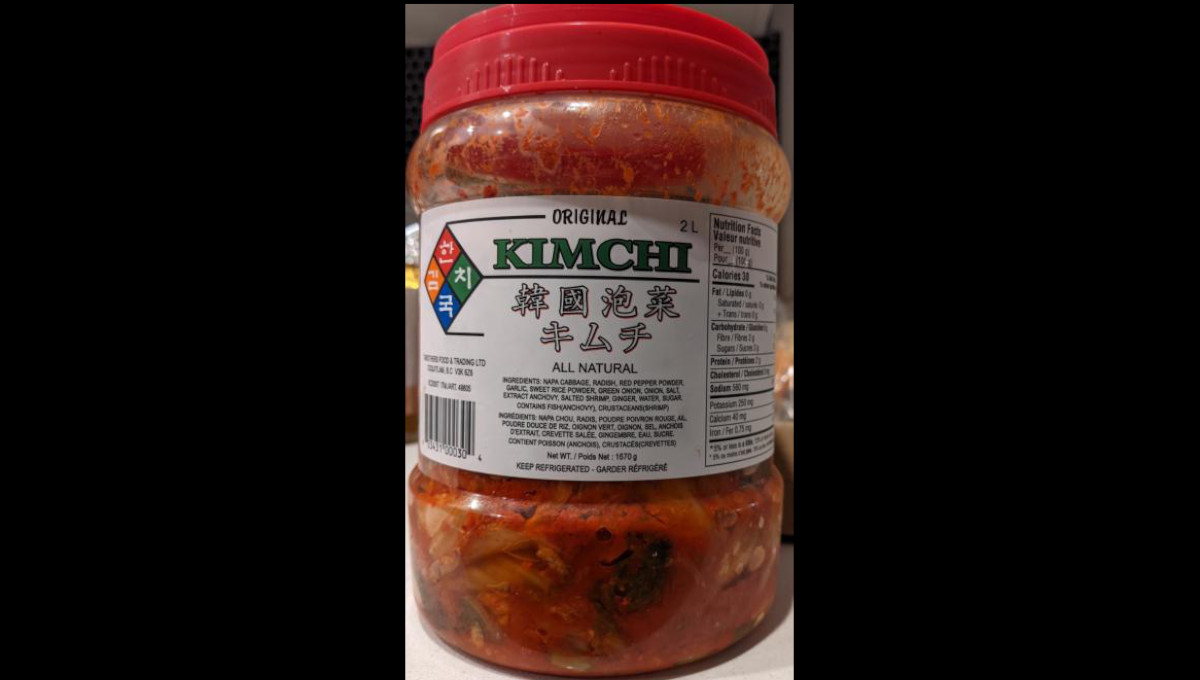Researchers in Canada have detailed the first known outbreak of E. coli O157 associated with kimchi outside of East Asia.
Fourteen Shiga-toxin-producing E. coli (STEC) O157 cases were identified in two provinces in Western Canada. Thirteen patients lived in Alberta and one in Saskatchewan.
Symptom onset dates ranged from Dec. 11, 2021 to Jan. 7, 2022. The age of cases was from 0 to 61 years old and 64 percent were female. No hospitalizations or deaths were reported.
Fermented vegetable products are acidic, so thought to be a poor environment for pathogens, and an unlikely vehicle for outbreaks, according to the study published in the journal Epidemiology and Infection. Kimchi is a traditional Korean side dish consisting of cabbage and other vegetables that are salted and fermented with additional ingredients.
Tracing the source
Many patients reported fermented vegetable consumption in the 10 days prior to becoming ill, which led to identification of kimchi as a suspect source on Jan. 27, 2022. Interviews by the Public Health Agency of Canada (PHAC) revealed 13 patients had shopped at one grocery chain.
Ten reported consuming one brand of Kimchi during their exposure period. The Canadian Food Inspection Agency (CFIA) completed traceback and traceforward work on the suspected product.
One open and one closed sample of Kimchi tested positive for STEC O157, with isolates genetically related by whole genome sequencing to the outbreak strain.
In January 2022, Hankook (Korean characters only) brand Original Kimchi with two best before dates in that same month was recalled.
Kimchi was produced in Western Canada without heat treatment steps, which is common for its processing. It contained Napa cabbage, radish, red pepper powder, garlic, sweet rice powder, green onions, onion, salt, anchovy extract, salted shrimp, ginger, and sugar water.
Thirty-three retail and retention samples of Hankook Kimchi, representing 61 units from 31 production dates, were tested. Best before dates ranged from Jan. 22, to March 25, 2022. Two isolates from a single retention sample were positive for E. coli O157.
The positive sample had a best before date of Jan. 23, 2022. It had a pH of 4.1, and the two E. coli O157 isolates recovered from the sample matched clinical isolates from the outbreak. Testing of various kimchi samples showed a range of pH from 4.1 to 5.3, with older samples having a lower pH.
Production dates for both recalled products were in November, so before the earliest case onset in December 2022.
Similar E. coli strain to 2020 U.S. outbreak
Napa cabbage was hypothesized as the most likely source of contamination in the Canadian outbreak. It was the only raw vegetable ingredient that received no sanitizing wash and no lethality steps. It also made up 70 percent of the kimchi formulation by weight.
The same shipment of imported Napa cabbage grown on a farm in Washington state was used in the two lots of Kimchi that contained E. coli O157. This shipment was a new source temporarily used by the manufacturer during the production of the two implicated lots; the firm did not receive any other products from this source after this period.
As Napa cabbage was not confirmed as the source, potential preventive measures at the farm level were not implemented.
A search of PulseNet databases identified that Canadian isolates were similar to a 2020 U.S. outbreak cluster. Although the source of the outbreak was not identified, many cases reported eating various types of leafy greens. Later sampling outside the investigation in 2020 identified the outbreak strain in a sample of romaine lettuce from California.
No connection was found between the California romaine lettuce sample that matched outbreak isolates and the Napa cabbage from Washington. This investigation supports the possibility that the same E. coli strain can be found in different leafy greens, in geographically distinct areas, said researchers.
(To sign up for a free subscription to Food Safety News, click here.)

